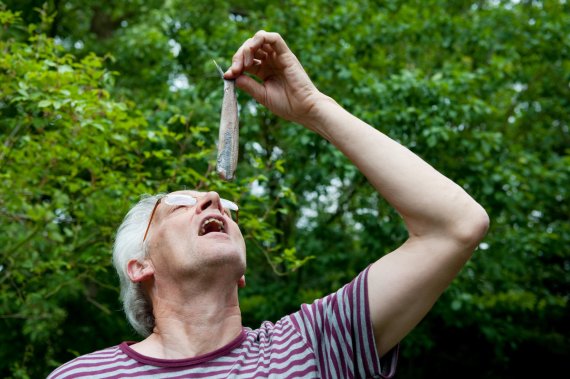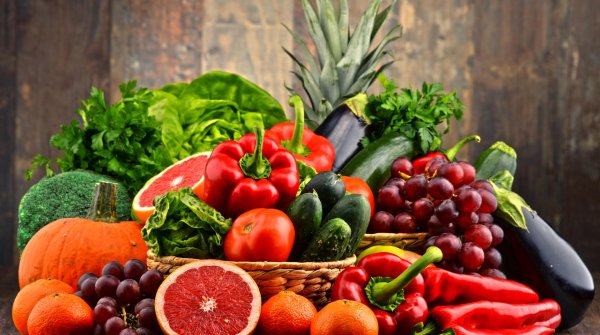
Whether muscle building, fat reduction or simply for the benefit of health - there are more nutrition trends than ever before. A relatively young and still sympathetic idea is the Paleo diet:Following the Paleolithic period, only untreated foods are consumed in this diet trend. Meat, fish, berries, nuts, fruits and vegetables are the basic components of this diet - according to the ancient principle of hunter-gatherers. For this reason, people also like to talk about the Stone Age diet.
All foods that only became available to humans with the introduction of agriculture and animal husbandry are off limits in the Paleo diet. And these are not exactly few: From grain and dairy products, to sugar, to industrially processed fats and additives - none of these find their way into the kitchen on the Stone Age diet.
Even animals that have been fed with grain do not make it onto the table. Fish may only come from wild-caught fish, preferably from the rapids right next door. After all, in the Stone Age you couldn't just jet off to Alaska to get the best salmon there. So Stone Age always means regional, which is in line with many other nutritional theories of today.
According to Paleo, the human organism cannot use foods such as milk, grains, sugar or hydrogenated vegetable fats, or can only use them poorly. All these products can be harmful to health.
Allegedly, even many of the modern civilization diseases such as diabetes, obesity and auto-immune diseases can be traced back solely to the dietary form of past centuries. On the other hand, those who practice renunciation can think better, have clearer skin and, of course, better sex. Isn't that worth trying?
With the Stone Age diet, only fresh and unprocessed foods are put on the plate. But what exactly is allowed?
- Fruit and vegetables
- Fish and meat
- eggs
- Seeds and nuts
- honey
- Maple syrup
- unheated, cold-pressed oils such as olive oil, coconut oil, nut oils, palm oils and lard
Conversely, everything else must be done without. But does that apply to all foods? How does it look with the otherwise so healthy oatmeal in a Paleo diet? The following list provides the answer to which foods are not allowed:
- Pasta
- Legumes
- Dairy products
- Cereal products such as bread and oatmeal
- Sugar and sweeteners
- convenience foods
- Coffee, alcohol and soft drinks
- sweets
- Biscuits and cakes
- Processed sausages and cold cuts
But why is Paleo considered one of the healthiest diets by many a food expert? After all, the people of the Stone Age were not exactly known for their high life expectancy. The positive views on the diet can be explained as follows: Foods like meat, vegetables and fruits have been accessible to humans since the beginning of their evolution about 2.5 million years ago.
Consequently, the genes of Homo Sapiens - modern man - have also adapted to natural foods during this long period. Agriculture and animal husbandry, on the other hand, which can be seen as man's first widespread influence on his own food, have only existed for a relatively short period of 10,000 years. That's a tough time for the stomach.
Needless to say, there are critics. You ask, with some justification: Did everyone in the Stone Age eat the same diet? And also: why shouldn't the last 10,000 years of agriculture and animal husbandry have had a genetic effect?
In short: Not everyone wants to be seen as a Stone Age archetype whose advances in agriculture ultimately upset their stomachs. Good arguments exist for both sides. As is so often the case, the only people who are wrong are those who lean completely to the left or to the right.
The renunciation of certain foods pays off, because in terms of benefits, the Paleo diet has a lot to offer. The protein-containing diet makes you full and the renunciation of sugar as well as convenience products is not only good for your weight, but also for your overall health. Especially sugar and saturated fatty acids cause many diseases.
The goal of a Paleo diet for many is: Lose weight. But that's exactly what can go wrong with this diet. The Stone Age diet provides one with many fats, which can lead to weight gain and high cholesterol levels. Too much meat consumption also makes for a bad environmental balance.
The financial aspect should not be ignored. High-quality meat in particular costs a lot of money and even organic food is not cheap.
Nutritionists , in particular, see disadvantages in foregoing dairy products and legumes, for example, because they provide many valuable nutrients.
As a vegan one becomes with this nourishing form rather not happy. On the other hand, if you like to consume meat and fish, you can definitely identify with Paleo.
The sporting goals behind the selected diet are also always decisive. For muscle building Paleo is well suited, but for weight loss it is rather debatable. Here it depends on which foods are chosen.
Diets should always be discussed with your doctor. This way, you can be sure that the chosen diet will achieve long-term results and, above all, that you are living healthily.
The Paleo diet is becoming increasingly popular. People are eating more consciously and want to avoid sugar and unhealthy fats. However, it is questionable whether Paleo is the right choice.
For a healthy and balanced diet, you shouldn't fall for every craving, but you shouldn't give up everything either. It's all in the mix! Many approaches to the Stone Age diet are good, but you would also have to give up healthy foods like oatmeal and legumes.
Finally, we have summarized the most frequently asked questions about the Stone Age diet.
This is a nutritional therapy that is fundamentally based on the Paleo diet and aims to alleviate the symptoms of autoimmune diseases.
Muesli is a popular breakfast, but oats and other grains must be avoided on a Paleo diet. There are companies that specialize in the distribution of Paleo muesli. Alternatively, a muesli can be prepared from nuts and seeds.
If you avoid sugar and convenience foods, you are doing something good for yourself and your health. However, this diet can also lead to weight gain if you eat too much fat.
- ISPO awards
- Mountain sports
- Bike
- Design
- Retail
- Fitness
- Health
- ISPO Job Market
- ISPO Munich
- ISPO Shanghai
- Running
- Brands
- Sustainability
- Olympia
- OutDoor
- Promotion
- Sports Business
- ISPO Textrends
- Triathlon
- Water sports
- Winter sports
- eSports
- SportsTech
- OutDoor by ISPO
- Heroes
- Transformation
- Sport Fashion
- Urban Culture
- Challenges of a CEO
- Trade fairs
- Sports
- Find the Balance
- Product reviews
- Newsletter Exclusive Area
- Magazine






